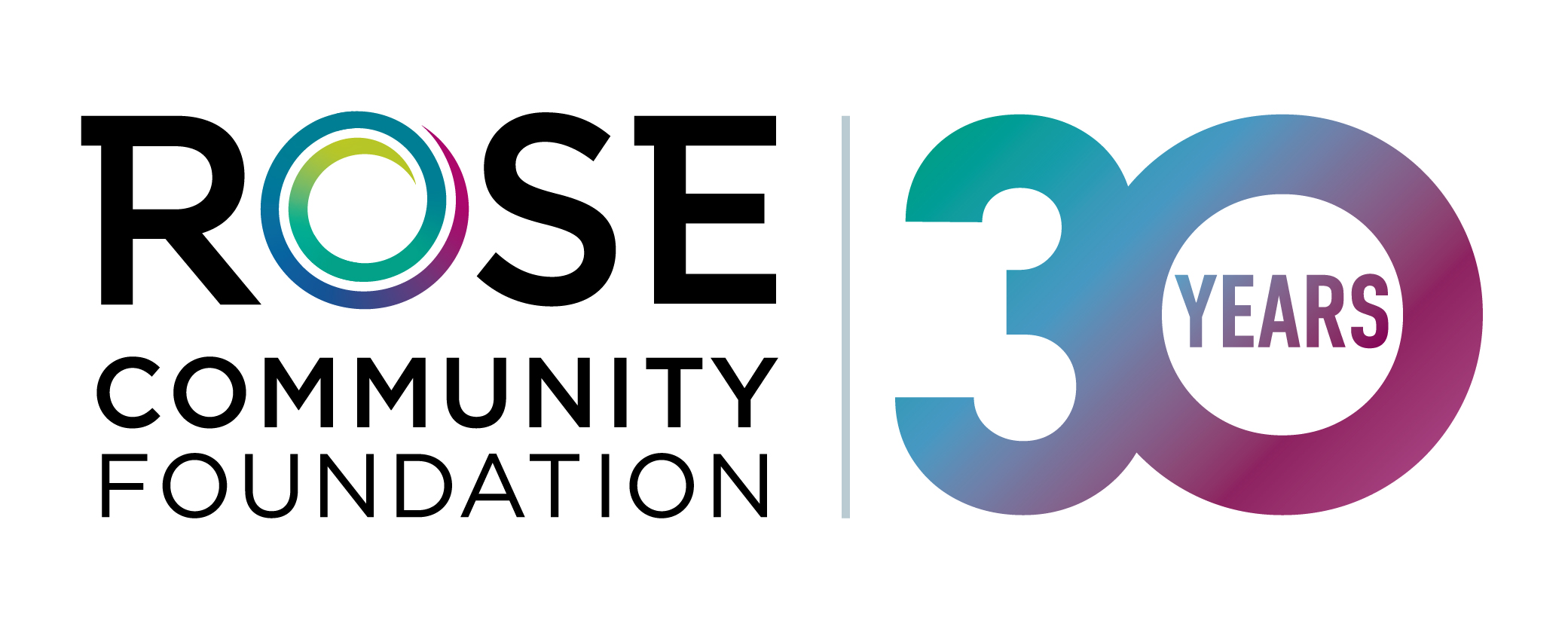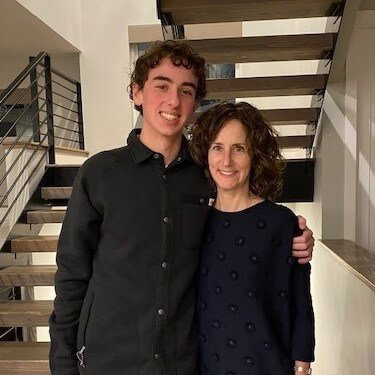When Julie Selsberg and her son, Cole Protass, gathered with family for Hannukah, they wanted to find a way to make the celebration feel particularly meaningful.
“Especially in these times – with the pandemic, individuals experiencing homelessness and the increased number of immigrants and refugees – it felt like the right time to discuss how our giving connects with our Jewish values and how we can intentionally support those most in need” says Julie.
Both Julie and Cole were familiar with the concept of collaborative giving. Julie is a former member of Rose Women’s Organization, a giving circle that traces its roots to the women’s auxiliary at Rose Medical Center. She is also a member of Rose Community Foundation’s Board of Trustees and chair of the Policy and Advocacy committee. Cole was first introduced to collaborative giving as a member of Rose Youth Foundation (RYF), a Foundation giving initiative for Jewish teens.
“I first learned about RYF from my sister, who also did the program. I think it’s cool to see how young people can work together to have an impact on the local community,” says Cole, a junior at Denver’s East High School.
At the Rose Youth Foundation virtual Hannukah celebration in 2021, Cole and Julie were introduced to the Friends and Family Giving Circle Toolkit, a Rose Community Foundation guide to help families host their own giving circle at home. In a giving circle, members pool their individual donations and work together to determine where to direct their contribution. Giving circles enable participants to make a greater difference together than they could alone and provide a platform for learning that can deepen the meaning and impact of personal philanthropy. It prompted Cole and Julie to host their own giving circle during their Hannukah celebrations.
After dinner and gifts, the family discussed their values and giving priorities. Guided by the Jewish value of Tikkun Olam, repair the world, Cole asked family members to brainstorm areas where their gift could make the most impact. The family collectively developed a list of potential grantee organizations and then voted on where to direct their dollars.
Ultimately, the group chose to make two gifts together: to the Dumb Friends League, the largest nonprofit animal shelter in the Rocky Mountain region, and to the Colorado Afghan Evacuee Support Fund, a fund housed at Rose Community Foundation which works to ensure that Colorado is prepared to welcome Afghan evacuees and connect them with community resources.
“It was interesting to see which issues and organizations people connected with,” says Cole. “My younger cousins gravitated towards the Dumb Friends League because they love animals. There was so much enthusiasm throughout the process, and it put everyone in a good mood.”
When thinking about what he would tell other young people looking for ways to support their community, Cole says “what this experience taught me is that you don’t have to go to great lengths to start giving. You just need paper, some sticky notes and your family or friends. My advice would be to start a conversation at family dinner and see where it goes.”
Julie hopes that a personal connection to giving is something her children continue to embrace. “I want my children to think globally about how they can give back to the community. This giving activity was not only fun and personally fulfilling but connected philanthropy to our own family values.”
And it’s a tradition they plan to continue. Adds Julie, “it was a wholehearted agreement from all involved that it’s something we want to do every year from now on.”
Individuals interested in hosting their own giving circle can download the Friends and Family Giving Circle Toolkit or contact Rose Community Foundation’s Philanthropic Services team to learn more.

